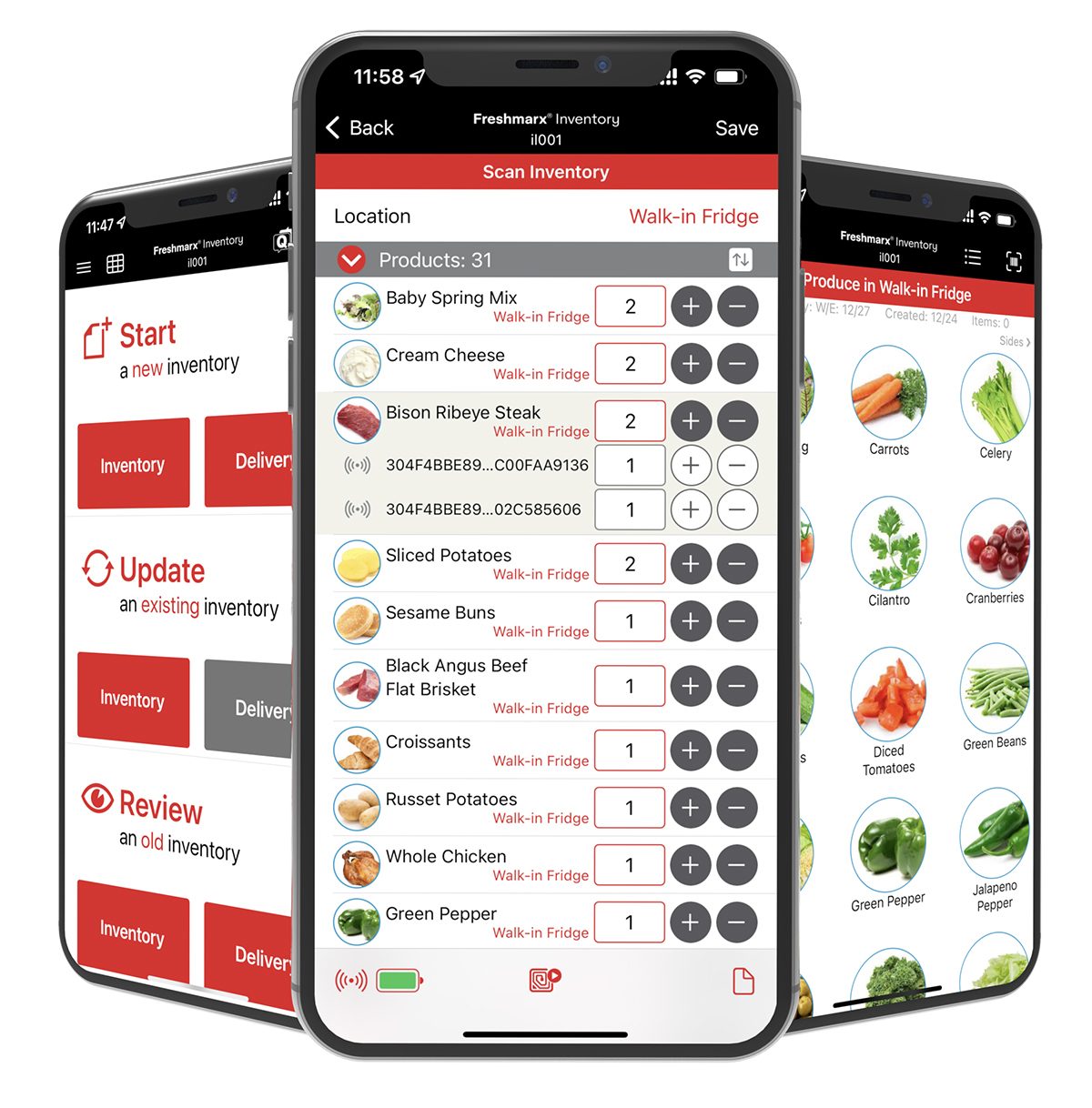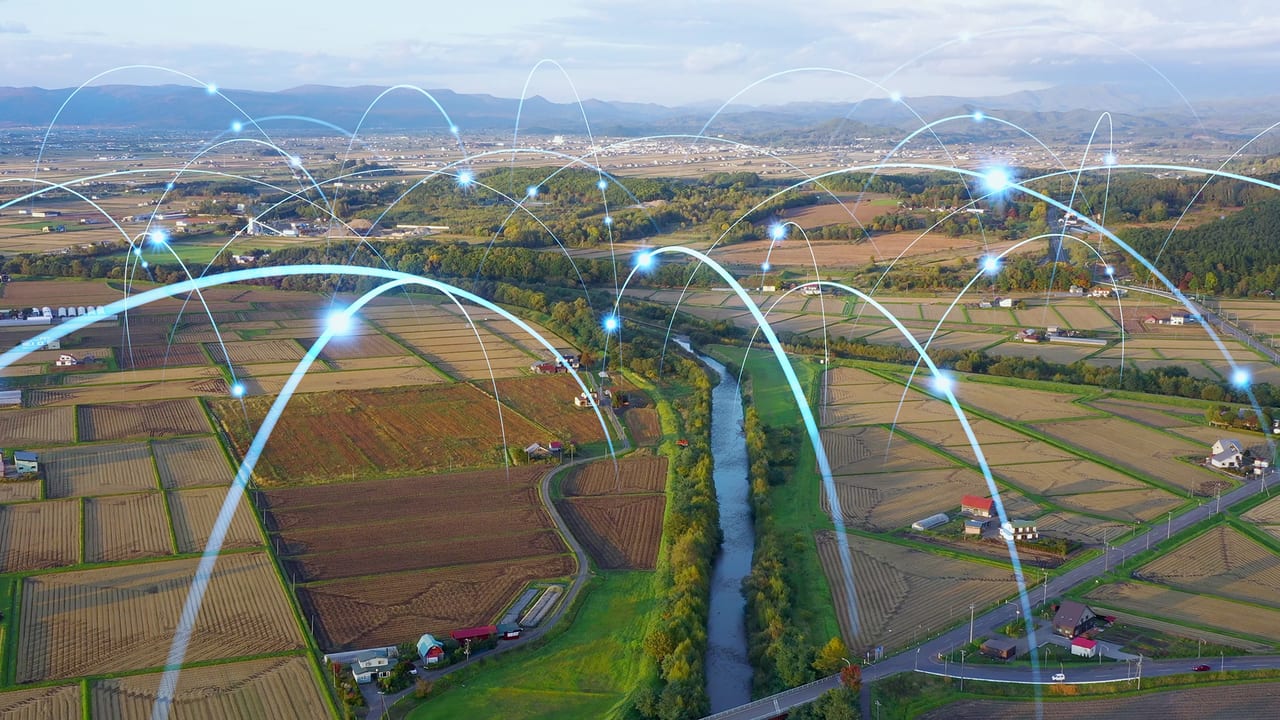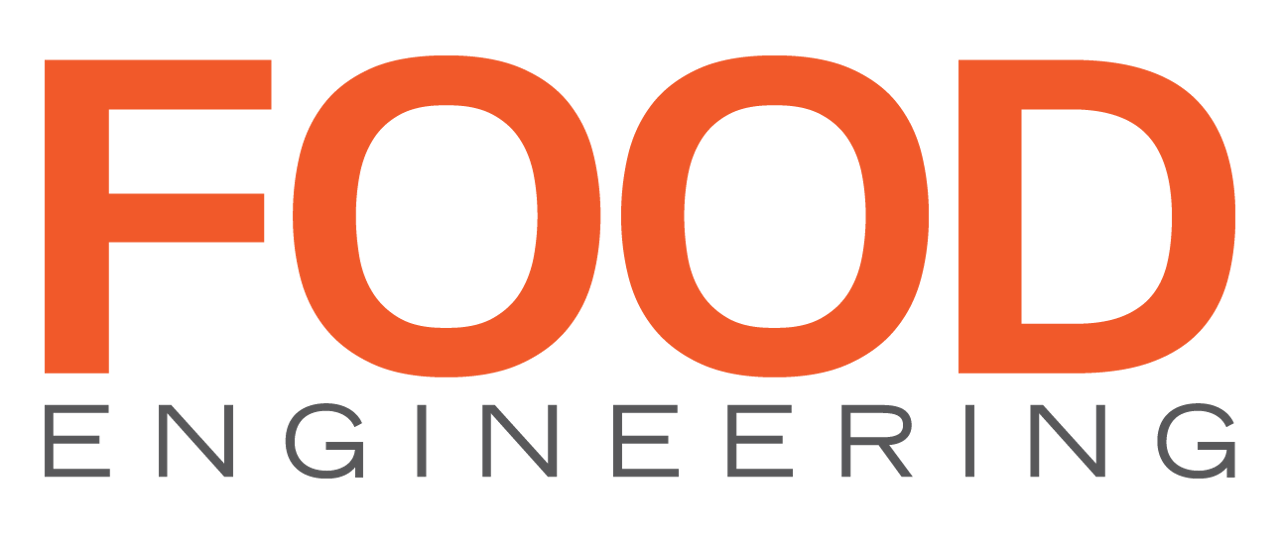APRIL 2022
Managing agricultural supply
from farm to fork
Agronomic insights help optimize operations across the food value chain
Sharon Spielman, SENIOR EDITOR
Photo courtesy of Getty Images/AVTG
When it comes to managing agricultural inventory, food and beverage processors need to be able to track their ingredients along the entire supply chain.
They need to get their products to the right place at the right time and in the right quantity. Today’s supply chain is in flux, and in a disruptive business environment, manufacturers require the exchange of real-time information with trading partners to better respond to market volatility and changing customer demands.
“Agri suppliers are under more pressure to manage their supply chains now more than ever,” says Stephen Dombroski, director for consumer products, food and beverage at QAD, a provider of cloud-based enterprise resource software and services for global manufacturers. “Government regulations and consumers are driving the push to sustainability, traceability and fresher products.”

Transparency and customer connection is key to keeping the supply chain moving and safe food flowing through it. “Information is critical,” Dombroski says. “People in and out of the food industry do not realize that there are two supply chains. The most known of the two is the physical. This is the movement of the products, materials and ingredients through the supply chain. The lesser known and at times maybe the most important is the digital supply chain. That is where the information moves along with the product,” he explains. “If these two supply chains are not connected, then a breakdown will occur.”
With so many industry disruptors today—including ever-changing consumer preferences, an expanding value chain, companies exploring product offerings and shorter lifecycles, contract manufacturing and sustainability—manufacturers need to have improved supplier communication with the agricultural marketplace to manage all supply chain issues and minimize risk.
Remote monitoring of crops helps efficiently identify issues in the field. Photo courtesy of Agritask
Connecting manufacturers to growers
The main challenge for companies is the lack of visibility across the supply chain, says Amit Noam, COO of Agritask, maker of an open SaaS Agronomic Intelligence (AgI) platform. “These companies are disconnected from their growers. Their lack of visibility and ongoing communication makes it difficult for them to understand the state of field operations and to provide the right advice and best practices for the growing process,” he says.
Lack of connection creates problems with predicting supplies, he notes, and companies are having difficulties understanding and tracking the final product quality and quantity. “This means that they can suffer from shortages or quality variations, which causes problems,” Noam says.

Take Heineken, for example. The beer maker was looking to improve data management for its sourcing operations in Mexico, which span across thousands of barley growers and more than 70,000 hectares of farmland. Operations include multiple stages throughout the season, including grower registration, survey and seed sale; tracking seasonal activities and farm inputs usage; and harvest delivery and post-season evaluation.
To monitor in-season activities and support their barley growers, Heineken employed physical visits of its staff throughout the season, but this only provided partial visibility into field activities, and not many opportunities for guidance on best practices.
To ensure effective coordination and increase engagement with farmers, Heineken wanted real-time visibility into the fields as well as functionalities to support its existing data protocols, workflows and best practices they had developed over the years. The solution they were after needed to support and provide value for both Heineken staff and growers alike—and, it does.
This inventory management platform, which uses GS1 standards, allows the tracking of fresh products across the whole supply chain. Photo courtesy of Avery Dennison
Stephen Dombroski, director for consumer products, food and beverage, at QAD, says that the following industry disruptors have an impact today’s agricultural supply.
Consumer preferences are changing. Consumers are demanding new products that cover a variety of areas. Allergens, health, weight loss and more. In addition to product changes they are looking for technological advances with smart labels to integrate technology into the food manufacturing process. These changes are impacting the types of ingredients food manufacturers are now using in their products.
The value chain is expanding. The value chain offers more avenues for consumers to purchase products. These avenues mean manufacturers need to have product available quicker than ever before. This strains the supply chain but most importantly, suppliers. It requires suppliers to deliver quality products in a shorter timeframe and with greater reliability. Agriculture suppliers are facing new challenges.
Manufacturers are exploring new product offerings and shorter lifecycles. COVID-19 was a test market for consumer product and food and beverage manufacturers to test new products and take advantage of people being forced to cook at home. They utilized the changing preferences of consumers to introduce new products. This puts major pressure on the suppliers.
Contract manufacturing. Contract manufacturing/co-packing are helping brand manufacturers deal with the demand increases for products to compensate for next day delivery on the increasing on-line buying markets. This opens up new points of delivery for agri producers increasing their already complicated supply chain issues.
Sustainability. Many consumers are refusing to buy products from manufacturers that do not have a documented and public sustainability statement, direction and mantra. The sustainability push is here to stay and altering how food is grown, produced, packaged and distributed.
Supply chain disruptors
Using an open SaaS AgI platform, the mobile app allows growers and local suppliers to communicate with Heineken from the field, and a web-based user interface means that Heineken’s staff can receive aggregated, actionable information. Real-time visibility through a single source for all stakeholders was achieved while providing functionality and support for several work processes, including:
Grower registration and survey. A structured database of growers, plot polygons, compliance data, soil management and more.
Seed sale. Documentation of seed sales per grower.
Crop monitoring. Monitor field activities, farm inputs use and costs throughout the season: planting, fertilization, irrigation, pests, disease, weed control and harvest.
Satellite-based monitoring. Remote sensing of crop health and water stress, generating alerts on irregularities and providing a benchmark between plots.
Weather forecasting and alerts. These are based on virtual weather stations.
Harvest delivery. Growers can request harvest delivery digitally, automating the processing and approval process for Heineken.
Post-season evaluation. Associate performance metrics with plot activities through the season, including a benchmark for better guidance and year-over-year improvement.
Remote monitoring of crops helps efficiently identify issues in the field. Climate alerts regarding precipitation impact irrigation needs. Overall, this tool has increased and improved the engagement between Heineken and its growers.
“Agritask helps us understand the status of our growers by having all agronomic data in one user-friendly platform according to how we would like to work,” says Erik Alejandro López Valladarese, procurement manager at Heineken, Mexico. “Our processes are now automated and well-structured.”
Noam adds, “Having one platform for all this data collected from different inputs makes it much easier to build decision-support models. This way, when X, Y or Z happens, you can plan your activities based on this data and automate notifications, alerts and decision-making from an agronomic perspective.”
"Agri suppliers are under more pressure to manage their supply chains now more than ever."— Stephen Dombroski, director of consumer products, F&B, QAD
Speaking the same language across the chain
Because agricultural supplies are managed by multiple trading partners as they go from farms to tables, a common language helps when interacting on the goods they exchange. GS1 standards provide this common language. GS1 standards create a common foundation for business by uniquely identifying, accurately capturing and automatically sharing vital information about products, locations assets and more, explains Daniel Riscalla, senior director of technology, Avery Dennison.
The GS1 standard uses several acronyms, including these key ones:
GLN: The global location number is an ID that uniquely identifies the brand owner of the product. It allows identification of a physical location, legal or functional entity within an enterprise. This allows the trading partners to identify where and by whom a product was manufactured/supplied.
GTIN: The global trade item number uniquely identifies a product and its various packaging levels (e.g., item, case, pallet) physical or non-physical.
SGTIN: The serialized global trade item number is an add-on to GTIN that allows to individually identify different units of the same product. For example, while a GTIN will identify a case to contain tomatoes, an SGTIN will uniquely identify a specific case of tomatoes. The use of SGTIN becomes more prevalent with RFID technology.
GS1-128 barcode: This is a barcode that encodes a number of data attributes about the goods it represents. In the food industry, it will typically represent information about what type of product it is (GTIN) along with a number of optional attributes including lot, date code, weight, and more.
GDSN: The global data synchronization network is a network of interoperable data pools enabling collaborating users to securely synchronize master data based on GS1 standards.
GDSN Data Pool: This is a service provider that is certified to share and exchange data over the GDSN.
Before his role at Avery Dennison, Riscalla purchased his first Subway restaurant franchise in 2010. It was then that he saw the need for back-office technology that would help him (and ultimately thousands of other franchisees) conduct store inventory in a more efficient way.
“I remember the first time I did my weekly inventory in the restaurant. I was looking at the cases on the shelves, asking myself ‘Why am I holding a paper and a pen to count the inventory? I see barcodes on cases, and I have an iPhone with me,’” Riscalla says.
With a background in technology and software development, Riscalla founded a software and hardware solutions company, ZippyYum, and set out to create what is GoVentory today, an inventory management application. It is used by 98% of the more than 24,000 Subway restaurants in the U.S. and Canada under the SubVentory moniker. When Avery Dennison acquired ZippyYum in March 2021, it also launched atma.io, a digital venture and its connected product cloud capable of creating, assigning and managing unique digital identities for everyday items.
This platform allows the management of fresh products across the whole supply chain. It allows the tagging of products at the supplier level, for instance. “The product can be tagged with a label showing a GS1-128 barcode, which includes the GTIN as well as any freshness and food safety attributes,” Riscalla explains. “Or the product can be tagged with an RFID label, which would include an SGTIN. This will allow a more accurate tracing of products across the supply chain as it includes a unique serial number for each case.”
The software can collect events about the movement of product, including additional attributes such as temperature in a refrigerated unit. The platform also allows the tracking of product at the location where the product is being sold. The use of GS1 standards allows it to automatically detect, manage and notify the user about products approaching their best use-by date, expired products and even recalled products.

Because agricultural supplies are managed by multiple trading partners as they go from farms to tables, a common language helps when interacting on the goods they exchange. Photo courtesy of Getty Images / metamorworks
Tracking for compliance and safety
In addition to supply management—and no matter the platform utilized—our agricultural food supply needs to effectively track the movement of a food to prevent or mitigate a foodborne illness outbreak.
Noam reminds us that companies are required to have more visibility over their raw materials’ upstream supply chain. “Consumers are becoming more demanding because of food security and safety. It has become more important to have structured platforms that enable companies to have visibility over growing operations to secure their supply, ensure sustainable practices and track compliance with their goals, creating transparency across the agri-food value chain—from sowing-to-harvest, from farm-to-consumer."
Riscalla adds, “It is important to mention some ongoing activity with the FDA—specifically Section 204 of the FDA Food Safety Modernization Act (FSMA), known as FSMA 204. This section requires the FDA to designate foods for which additional recordkeeping requirements are appropriate and necessary to protect public health, and to establish those recordkeeping requirements.”
The additional recordkeeping requirements that the FDA proposes to establish are intended to make it easier to rapidly and effectively track the movement of a food to prevent or mitigate a foodborne illness outbreak. It is estimated that the bill will be signed November of this year, placed into law January 2023 and companies will have two years to comply to the law. FE
APRIL 2022

